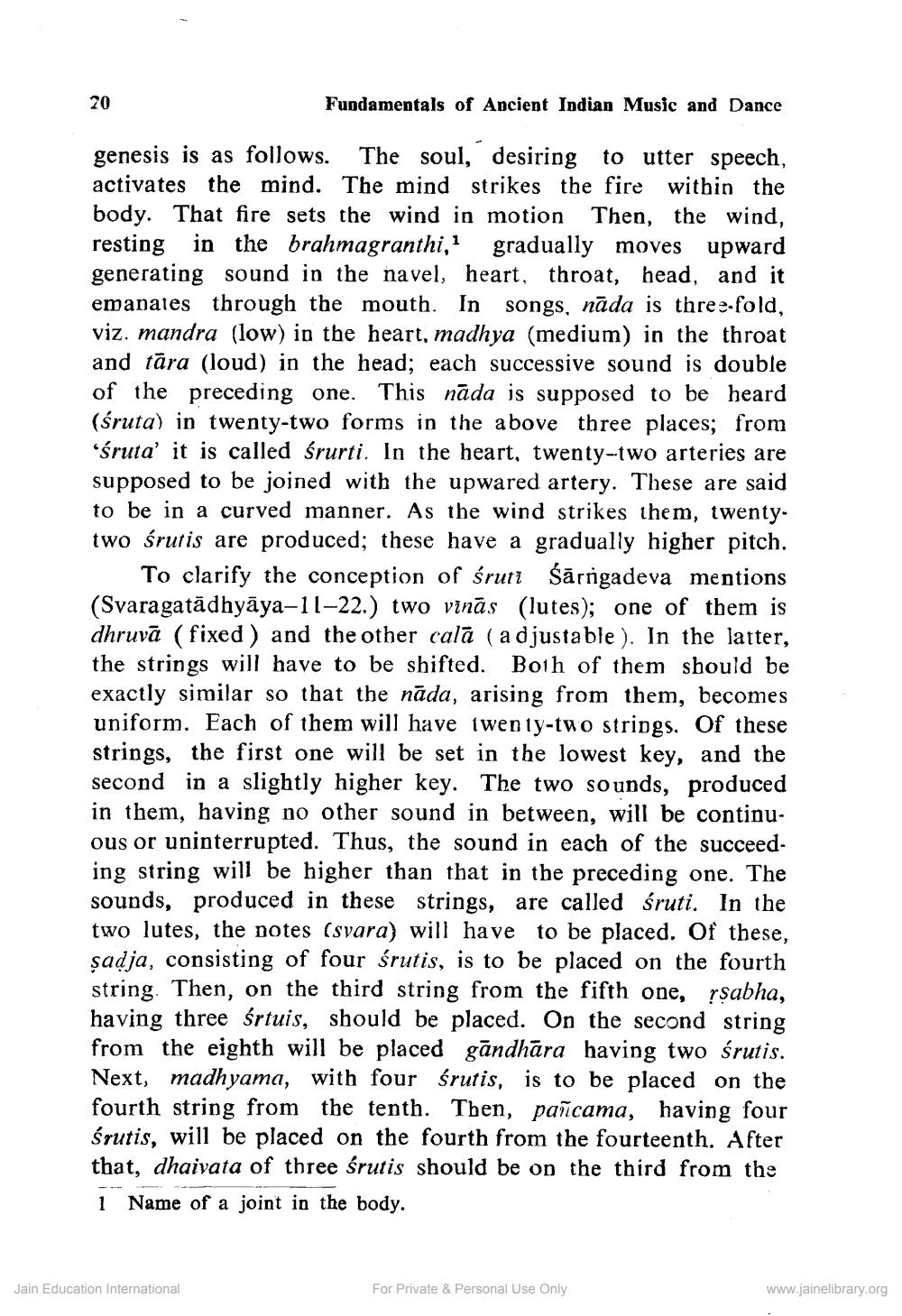________________
20
Fundamentals of Ancient Indian Music and Dance
genesis is as follows. The soul, desiring to utter speech, activates the mind. The mind strikes the fire within the body. That fire sets the wind in motion Then, the wind, resting in the brahmagranthi,1 gradually moves upward generating sound in the navel, heart, throat, head, and it emanates through the mouth. In songs, nada is three-fold, viz. mandra (low) in the heart, madhya (medium) in the throat and tāra (loud) in the head; each successive sound is double of the preceding one. This nada is supposed to be heard (śruta) in twenty-two forms in the above three places; from 'śruta' it is called śrurti. In the heart, twenty-two arteries are supposed to be joined with the upwared artery. These are said to be in a curved manner. As the wind strikes them, twentytwo śrutis are produced; these have a gradually higher pitch.
To clarify the conception of śrut Šārrigadeva mentions (Svaragatadhyāya-11-22.) two vinas (lutes); one of them is dhruva (fixed) and the other cala (adjustable). In the latter, the strings will have to be shifted. Both of them should be exactly similar so that the nada, arising from them, becomes uniform. Each of them will have twenty-two strings. Of these strings, the first one will be set in the lowest key, and the second in a slightly higher key. The two sounds, produced in them, having no other sound in between, will be continuous or uninterrupted. Thus, the sound in each of the succeeding string will be higher than that in the preceding one. The sounds, produced in these strings, are called śruti. In the two lutes, the notes (svara) will have to be placed. Of these, sadja, consisting of four śrutis, is to be placed on the fourth string. Then, on the third string from the fifth one, rṣabha, having three śrtuis, should be placed. On the second string from the eighth will be placed gandhara having two śrutis. Next, madhyama, with four śrutis, is to be placed on the fourth string from the tenth. Then, pañcama, having four śrutis, will be placed on the fourth from the fourteenth. After that, dhaivata of three śrutis should be on the third from the
1 Name of a joint in the body.
Jain Education International
For Private & Personal Use Only
www.jainelibrary.org




